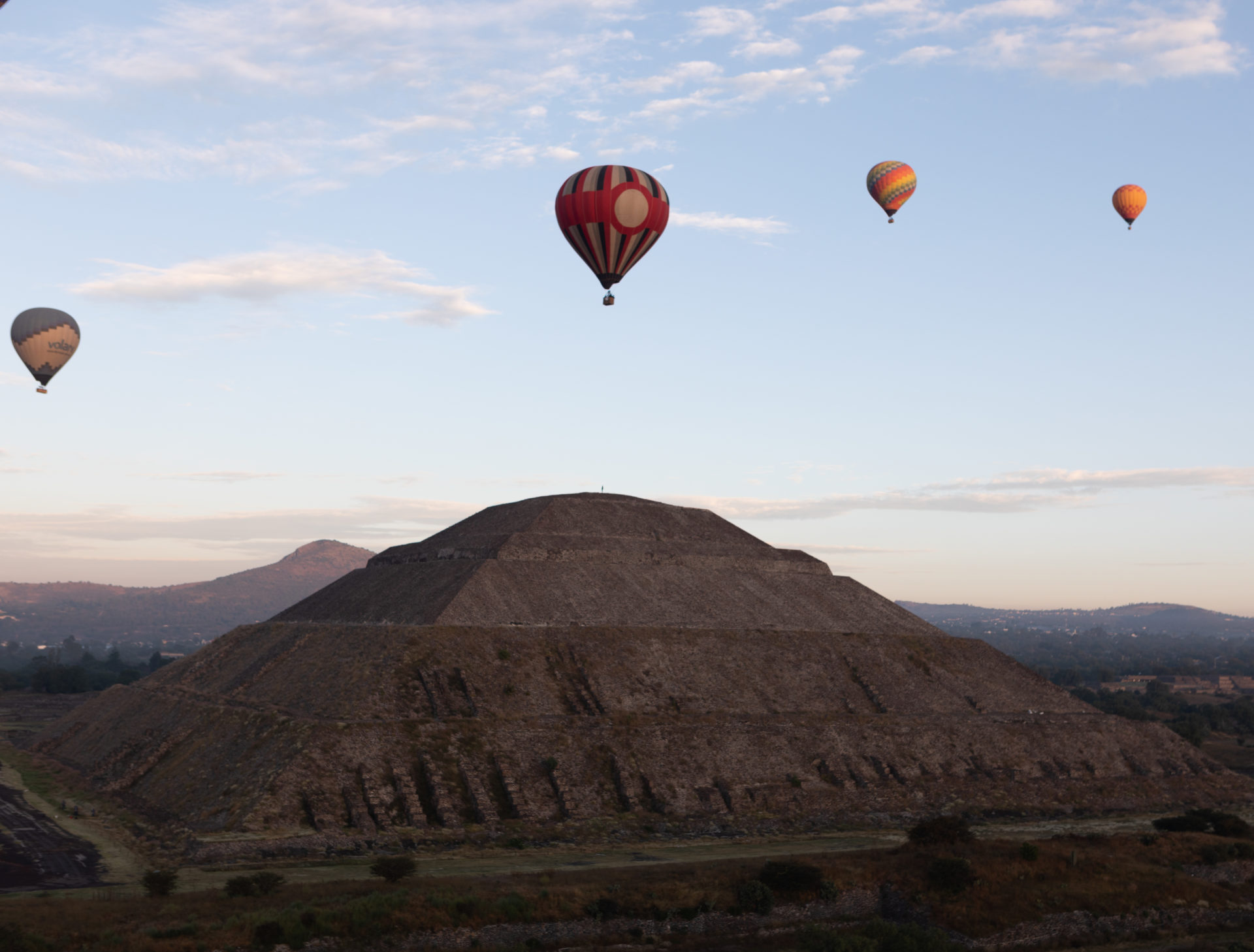
Teotihuacan, aka “The Place Where the Gods Were Created” is an ancient city situated northeast of Mexico City. The UNESCO World Heritage site is characterized by the vast size of its monuments – in particular, the Temple of Quetzalcoatl and the Pyramids of the Sun and the Moon, laid out on geometric and symbolic principles. As one of the most powerful cultural centres in Mesoamerica, Teotihuacan extended its cultural and artistic influence throughout the region, and even beyond.
Built between the 1st and 7th centuries A.D., the city lies 50km north-east of Mexico City, making it an accessible destination for tourists and locals alike. The active archaeological site is one of the largest pre-Christian ancient cities in the Americas, spanning across 36 km2 with at least 25,000 inhabitants at its peak. Its massive structures, including the temple and the pyramids, are linked together by Avenue of the Dead, which cuts through the middle of the settlement. Anthropological evidence suggests that Teotihuacan was a multi-ethnic and religious city, and artifacts such as masks, murals, and remains can all be viewed on site at the Museum of Teotihuacan Culture.
While walking around the city is nothing short of inspiring, the best way to see it is from the top. Luckily, you don’t have to climb to the top of the Pyramids of the Sun and Moon to do so, as the most popular way to get an aerial view of the city is via hot air balloon!
People from all over the world have come, putting their fear of heights aside, to see the wonders of Teotihuacan, calling it an unforgettable and magical experience, all less than an outside of Mexico City.
Scroll through the images below to get a sense of the surreal majesty of this experience and get inspired for your next visit!



